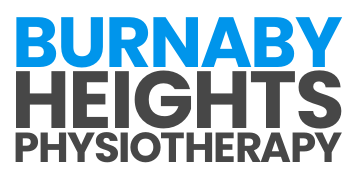
Targeted Pain Relief and Relaxation: How Acupuncture Helps the Body
February 3, 2025
Addressing Mobility Issues: How Physiotherapy Supports Long-Term Movement
March 15, 2025Plantar fasciitis is one of the most common causes of heel pain, making everyday activities like walking or standing a challenge. This condition affects people of all ages, from athletes to those with sedentary lifestyles. While rest and ice may offer temporary relief, long-term recovery often requires a structured approach. In this blog, we’ll explore how physiotherapy helps treat plantar fasciitis, the most effective treatment techniques, and what to expect during the recovery process.
Understanding Plantar Fasciitis
Plantar fasciitis is a condition characterized by inflammation of the plantar fascia, a thick band of tissue that runs along the bottom of the foot, connecting the heel bone to the toes. It often develops due to overuse, improper foot mechanics, or excessive strain, resulting in small tears within the fascia.
Many individuals with plantar fasciitis experience sharp heel pain, which tends to be most intense in the morning or after long periods of inactivity. The bottom of the foot may also feel stiff and tender, particularly near the heel, making it uncomfortable to walk or stand for extended periods. In many cases, pain worsens after activities that place repeated stress on the foot, such as prolonged standing, walking, or high-impact exercise. If left untreated, plantar fasciitis can become a chronic issue, significantly limiting mobility and affecting overall quality of life.
How Physiotherapy Helps With Plantar Fasciitis
Physiotherapy is a highly effective treatment for plantar fasciitis, as it addresses both the symptoms and underlying causes of the condition. A physiotherapist will create a personalized treatment plan to:
- Reduce Pain and Inflammation: Through hands-on therapy and targeted techniques, physiotherapy can help ease discomfort in the affected area.
- Improve Foot Mechanics: Physiotherapists assess gait patterns and foot posture to correct biomechanical issues contributing to plantar fasciitis.
- Enhance Flexibility and Strength: Strengthening and stretching exercises for the foot and lower leg can help prevent recurrence.
- Promote Healing: Physiotherapy techniques, such as soft tissue mobilization, can stimulate healing in the damaged fascia.
A structured physiotherapy program helps individuals regain mobility and return to daily activities without pain.
Physiotherapy Treatments for Plantar Fasciitis
Physiotherapy for plantar fasciitis incorporates a combination of treatments to maximize recovery. Some of the most effective techniques include:
- Manual Therapy: Hands-on techniques such as soft tissue massage and myofascial release reduce tension in the plantar fascia and surrounding muscles.
- Stretching Exercises: Targeted stretches for the plantar fascia, Achilles tendon, and calf muscles improve flexibility and reduce strain on the foot.
- Strengthening Exercises: Strengthening the foot and lower leg muscles helps provide better arch support and reduces stress on the plantar fascia.
- Shockwave Therapy: Some physiotherapists use shockwave therapy (ESWT) to stimulate healing and break down scar tissue in chronic cases.
The combination of these therapies provides a comprehensive approach to plantar fasciitis recovery, helping people achieve lasting pain relief.
How Long Does It Take to Recover From Plantar Fasciitis With Physiotherapy?
The time required for plantar fasciitis recovery depends on the severity of the condition, how well treatment is followed, and individual healing rates. In mild cases, where symptoms are caught early and treated with physiotherapy and home exercises, noticeable improvement can often be seen within four to six weeks. Moderate cases may require a longer recovery period, typically around eight to twelve weeks, especially if the condition has been present for several months.
Chronic cases, in which plantar fasciitis has persisted for an extended time, may take anywhere from three to six months for full recovery. These cases often require a structured physiotherapy program combined with lifestyle modifications to prevent recurring symptoms. Since early intervention leads to faster healing, seeking treatment at the first sign of plantar fasciitis is crucial in minimizing recovery time and preventing long-term discomfort.
Recommended Physiotherapy Exercises for Plantar Fasciitis
Exercise is a key component of physiotherapy for plantar fasciitis, as it helps improve flexibility, strengthen supportive muscles, and reduce strain on the plantar fascia. A physiotherapist may recommend the following exercises:
- Calf Stretch: Standing with your hands against a wall, place one foot behind the other and gently press your back heel into the ground to stretch the calf muscles. Hold for 30 seconds and repeat on both sides.
- Plantar Fascia Stretch: Sitting with one leg crossed over the other, gently pull your toes back toward your shin to stretch the bottom of your foot. Hold for 15-30 seconds and repeat several times.
- Towel Curl Exercise: Place a small towel on the floor and use your toes to scrunch it up. This strengthens the small muscles in the foot that support the arch.
- Toe Taps and Foot Doming: Sitting or standing, try lifting only your toes while keeping the ball of your foot on the ground. Then, practice “doming” by engaging the arch without scrunching your toes.
- Heel Raises: Standing with feet hip-width apart, slowly rise onto your toes and lower back down. This strengthens the calf muscles and improves foot stability.
- Rolling Massage: Using a frozen water bottle, tennis ball, or massage ball, roll the bottom of your foot back and forth to loosen tight tissues and improve circulation.
A physiotherapist will customize an exercise routine based on the severity of the condition and the individual’s unique needs.
Lifestyle Changes to Support Physiotherapy for Plantar Fasciitis
In addition to physiotherapy, making certain lifestyle adjustments can improve recovery and help prevent future flare-ups. Effective changes include:
- Wearing Proper Footwear: Supportive shoes with good arch support and cushioning can make a significant difference in foot health. Avoid flat, unsupportive shoes like flip-flops.
- Maintaining a Healthy Weight: Excess weight increases stress on the feet, so managing weight through balanced nutrition and low-impact exercise can reduce pressure on the plantar fascia.
- Avoiding Prolonged Standing or Walking on Hard Surfaces: If standing for long periods is unavoidable, using cushioned mats or supportive insoles can help absorb shock.
- Staying Active Without Overloading the Feet: Low-impact activities like swimming, cycling, or yoga can help maintain fitness without putting excessive strain on the feet.
- Managing Stress and Inflammation: Techniques such as ice therapy, gentle stretching, and massage can help relieve tension in the foot and promote healing.
By combining physiotherapy with these lifestyle adjustments, individuals can improve their foot health and reduce the likelihood of plantar fasciitis returning.
Heel Pain No More
Plantar fasciitis doesn’t have to limit your mobility or daily comfort. With the right physiotherapy approach, you can reduce pain, strengthen your feet, and prevent future flare-ups. At Burnaby Heights Physiotherapy, we provide tailored treatment plans designed to help you recover efficiently and get back to pain-free movement. Book your appointment today and take the first step toward lasting relief.






